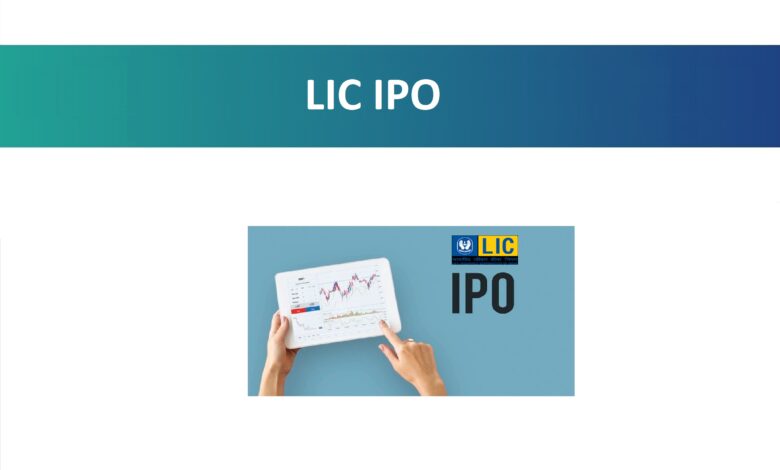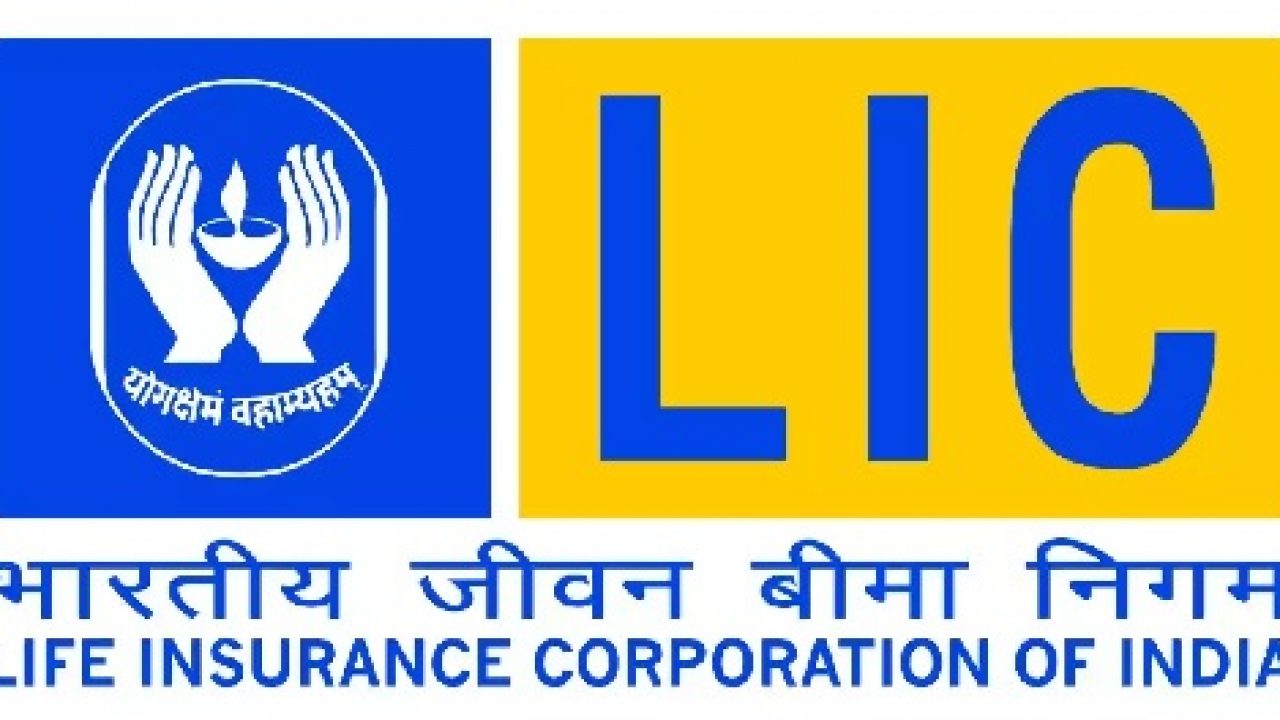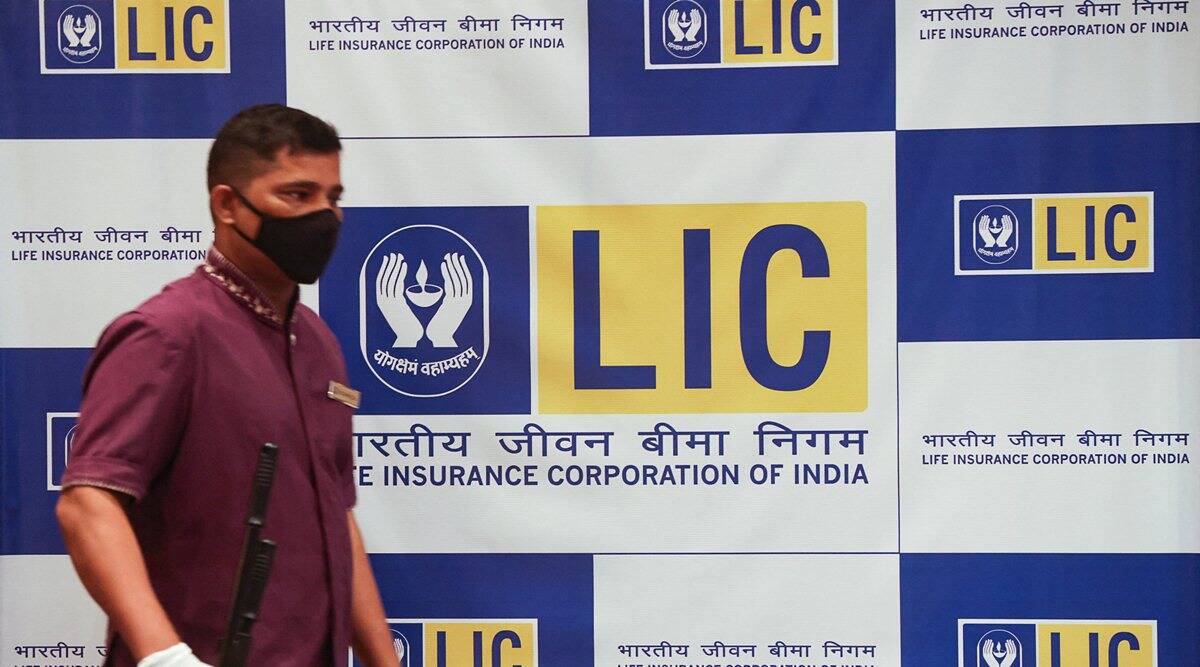Why investing in LIC IPO would be the biggest blunder Investment mistake for everyone.

Why investing in LIC IPO would be the biggest blunder Investment mistake for everyone.
The ancient saying, “act hastily, repent afterward,” may best describe the government’s hasty decision to sell a percentage of its ownership in India’s largest life insurance firm, the Life Insurance Corporation of India (LIC).
The haste with which LIC was listed shows a startling disrespect for the public interest while appealing to the whims of speculative “investors.” The price of the IPO suggests that it probably be India’s biggest-ever privatization debacle.
LIC is like a Trust that manages Rs. 34 lakh cr life fund of 42 cr policyholders and pay them 95% of profit earned. Privatization is transforming LIC into an investor-owned company. The government of India gains the monetized value of huge assets, investors’ profits, and policyholders lose their bonuses.
The government’s handling of India’s largest-ever IPO shows an astounding contempt for the public interest while appealing to the whims and fancies of foreign speculators who have haggled hard to buy the shares at a steep discount. The government’s callous disregard for the interests of millions of policyholders, who have helped to develop and nurture not just LIC but the culture of life insurance in India, while favoring a handful of international speculative interests, has only added to the suspicion that the LIC float is a massive scam — perhaps the biggest in India’s privatization history.
Apparently under duress from the Union Finance Ministry, the LIC Board opted to reduce the projected disinvestment from 5% to 3.55 percent on Saturday, April 23. The LIC Board of Directors met on April 26 to formally settle on the float’s debut dates and the level of discounts on the issue price that would be granted to policyholders and staff, among other specifics.
The government was up against a tight deadline that expires on May 12 after being overtaken by unusual circumstances, most notably the crisis in Ukraine and the volatility it has sparked in global markets. The government, which had taken the first official step toward selling a percentage of its LIC shareholding in February by submitting a Draft Red Herring Prospectus (DRHP) with SEBI, still had time to complete the contentious IPO.
If it had missed the deadline, it would have had to file new and updated financial data, which would have caused the IPO to be postponed. The important question that hangs in the air is whether this obligation may justify the hasty withdrawal of funds.

Pricing LIC Share at Deep Discount
The government aims to lower the IPO’s size from roughly Rs. 70-75,000 crore to about Rs. 21,000 crore, according to planted media stories in the last few days based on statements by anonymous officials in the Finance Ministry. The issue size can be decreased in one of two ways: by offloading fewer shares or by lowering the price of each share to be sold to potential shareholders.
The “quantity” effect stems from the government’s decision to reduce the number of shares offloaded by 30%.
The government intended to sell 31.625 crore shares, or 5% of LIC’s equity base of 632.50 crore shares, according to the DRHP. The amount of shares to be offered has been reduced to 22.1375 crore shares or 3.5 percent of the LIC’s equity basis. Unless, of course, one argues, like this author does, against the basic logic of privatization of India’s most successful insurance firm, there is nothing unusual about this thus far.
The “price impact,” it turns out, is where the Finance Minister’s nefarious scheme is revealed in all its nefarious splendor. Allow me to explain. The latest estimate of LIC’s Embedded Value (EV) was Rs. 5.40 lakh crore, according to Milliman Advisers and reported in the DHRP. This means that each share’s basic value is Rs. 853, ignoring the flaws of the EV concept for the time being.
LIC’s Initial Public Offering (IPO) was for a 10% stake, later lowered to 5%, and now to 3.55 percent. The market value of a LIC has dropped from roughly Rs 20 lakh crore to around Rs 6 lakh crore. As a result, the size of the issue has shrunk from Rs 60000 crore to Rs 22000 crore. Why is the government so eager to sell LIC at whatever cost?
Investors Gain, Policyholders Lose
Until roughly two months ago, it was assumed that the true value of each LIC share would be determined by multiplying it by a Factor of 2.5 to 3. This translates to a per-share value of between Rs. 2,133 and Rs. 2,559. A 5% stake sale, which would have resulted in 31.625 crore shares, would have netted the government between Rs. 67,456 crore and Rs. 80,928 crore.
When commercial insurance entities’ factors have varied between 2.5 and 4, a multiplication Factor of 1.1 on LIC’s inherent value is disgraceful.
According to media sources, the government is planning to drastically reduce the valuation by multiplying LIC’s projected EV by 1.1, which is a insufficient gauge of the underlying value of India’s largest life insurer, in response to relentless haranguing by international investors, citing “adverse market conditions” (and one of the biggest in the world).

There is no reason for using a considerably lower multiplication Factor, especially because even smaller private life insurers have multiplied their EVs by 2.5 to 3. The LIC merits a much higher multiplication Factor with a considerably longer track record and a larger market share.
Using the far smaller multiplication ratio of 1.1, each share to be offloaded is valued at around Rs. 938. This is around 44 percent cheaper at the lower end of the former value; at the higher bound of, the earlier valuation, the discount being given is 63 percent. To provide a more accurate comparison, consider how much money the government would have made if it had sold a 3.5 percent ownership in the company, which would have amounted to 22.1375 crore shares.
Using the same multiplication Factor as in February — between 2.5 and 3 — the government would have received between Rs. 47,219 crore and Rs. 56,650 crore. According to media sources, a reduced multiplier of 1.1 would get the government getting Rs. 20,765 crore from the 3.5 percent share sale, which has a per-share price of Rs. 938. Even if one overlooks the absolute folly of the privatization operation, the implied loss to the exchequer would be between Rs. 26,443 crore and Rs. 35,885 crore.
If this isn’t a ruse, what is it?
There is no way a company that invented life insurance in India, holds nearly two-thirds of the market, has more investments than the entire mutual fund industry, and has a flawless six-decade track record can be “valued” by irrational investors looking to make a quick buck at the expense of millions of policyholders. As a result, the LIC IPO can only be described in form of a massive fraud.
The Valuation Game
Even the EV’s Initial Value is a massive underestimate of LIC’s genuine worth. The enormous undervaluation of LIC is due to the valuation process, which is based on the idea of the EV, which has been approved and sanctified by the insurance regulator, the Insurance Regulatory Development Authority of India. The EV, which is intended to be an assessment of a life insurance company’s worth, is woefully insufficient for determining the genuine value of a unique Financing institution like LIC.
It’s important to note that the EV’s development like a conceptual measure of a life insurance company’s worth is relatively recent, particularly in the aftermath of the global financial crisis, which triggered a wave of mergers and acquisitions in the global life insurance industry following the failure of several insurers.
In essence, the EV attempts to provide a concise solution to the question: what is a life insurer’s future return worth to a company acquirer? This is the thin foundation on which the EV concept is built. Indeed, a paper by a Canadian actuary, Frédéric Tremblay, published in 2006, stated that the concept of EV “must be used carefully” because it is dependent on the underlying assumptions used in the valuation.
In reality, Aswath Damodaran, Professor of Finance at New York’s Stern School of Business and widely regarded like a “valuation guru,” has repeatedly underlined that any valuation is majorly dependent on the underlying assumptions that are made, which often reflect the valuer’s prejudices. Furthermore, a recent article by two Czech academics warns that relying too much on EVs to calculate values is dangerous. Instead, they recommend that, in addition to EV, another technique be used to arrive at a better assessment of the worth of an insurance firm.
Milliman has completely erased the value of Assets in its control, which is one of the most obvious items missing from the EV calculation in the case of LIC. Given that LIC is probably India’s largest realtor, owning great properties in all Indian metros and large cities and across the country, this is a surprising absence. There are no accurate estimates of the value of its real estate holdings, although some belief it to be worth several lakh crore rupees, majorly more than Milliman’s EV.
The LIC has never estimated the value of these Assets since it has never been needed to do so. However, the Fact that the government’s stake has been diluted in favor of private entities, stating that being new owners of LIC, they now have a claim on the Assets in its control, meaning that the reduced valuation immediately benefits the new owners, who had no involvement in the purchase of these Assets.
Under-Valuation and Expropriation of Policyholders
The method in which millions of existing policyholders have been expropriated is the most evident reality that emerges from the DRHP. In reality, the dramatic growth in the LIC’s EV — from Rs. 0.96 lakh crore in March 2021 to Rs. 5.40 lakh crore in September 2021 (in only six months) — is due to the LIC Act’s amendments.
The modifications deprive holders of participatory policies, who were lastly entitled to 95 percent of the surplus generated by non-participatory policies since they share in the risk associated with such policies, in one fell stroke.
The extraordinary gain in EV was made possible merely by seizing policyholders’ rights and transferring them to “shareholders.” Surprisingly, the rise in EV, a measure of what shareholders command, is based on the outright theft of the rights of millions of policyholders who have invested their funds.
In this light, the low value is a con on two counts: first, it deprives the government of “revenues” that the IPO would have generated. But, more crucially, it robs policyholders of their rights and transfers the benefits to private corporations that have had no part in the development and growth of LIC throughout the years.

International “investors,” according to media reports in recent days, are behind the aggressive discounts being considered by the Modi government. Isn’t it absurd and disturbing that these potential “purchasers” of LIC shares in the IPO, specially the so-called “anchor investors,” advise the government on the price? Isn’t it absurd to refer to such a transaction like taking place in a “market” where prices are purportedly established by the “free” will of the participants?
Who are the true owners of LIC?
Media pundits have studiously ignored the most important subject in the LIC saga: who truly owns LIC. They’ve been so sympathetic to the administration that they’ve claimed that the decreased valuation is due to causes outside the government’s control. This isn’t even witty. Even if you agree with the concept of the LIC IPO (which is absurd in and of itself), why would you agree to a value that is so drastically depressed in less than three months?
Wouldn’t propriety have required the government to approach the market later, given that we’re talking about a pioneering insurance firm that was uniquely formed, unlike any other in the world? It’s almost because if the government purposefully allowed itself to be pushed into a position by a group of shady investors.
The idea that policyholders are eligible for IPO shares is absurd and perverse. To begin with, there is no doubt that policyholders like a group, rather than individual policyholders, are being underserved. Second, millions of policyholders, particularly those with small-ticket size plans, may not be able to participate in the stock market or have the desire to do so. The reality that they will be denied being a class cannot be remedied simply by usually “enabling” them to participate in the IPO lottery.
Third, isn’t it strange that not a single member of the media has protested the idea of reserving a percentage of the IPO for policyholders, whom the government now views like “customers” of the LIC with no ownership rights, despite the LIC’s heritage?
Is there any public Offering in Indian capital markets history when a business has given its “customers” shares? It would have been absurd for PayTM to sell shares at a discount to its consumers, and the same is true for LIC.
The only explanation for this is that it is a tactical measure to quell criticism from millions of policyholders who are at risk of losing their status in form of “owners” of LIC, which was set up like a massive cooperative company in which the government served like a trustee rather than an absolute owner. The IPO has verified that the trustee has gone rogue.
The Initial Public Offering (IPO) is the First Step in LIC’s Deconstruction.
The IPO probably have long-term implications for LIC. According to the market regulator’s requirements, it must approach the market again within two years to establish a public stake of at least 10% and 25% within five years. The huge discount granted in this IPO will most probably keep the price of subsequent government share dilution low.
The government seems to be betting on a “feel good” impact from a “pop” in the share price immediately after the company is listed. Remember the IRCTC’s first Public Offering (IPO) in 2019? The share’s issue price was fixed at Rs. 315-320 per share; however, it opened at Rs. 644 on the day of listing. The “pop” that would occur when the share is listed would benefit neither the government nor millions of LIC policyholders; instead, only savvy investors would be laughing their way to the Cash.
Perhaps the government counts on speculative sharks to profit handsomely after exacting a premium based on the government and millions of policyholders’ losses. This is very natural for an government that has always been in a feel-good mindset. For millions of Indians, however, the IPO scheduled for May 4 will start the demise of one of the country’s most popular entitiess.
The left opposes LIC IPO, alleges ‘scam,’ ‘sell-off.’
On Thursday, left-wing groups slammed the government for launching the LIC IPO, calling it a “scam” and a “sell-off.” The CPI stated that it was part of the government’s “privatization drive.”
The BJP-led NDA government is selling off all national Assets through monetization policy and privatization of public sector enterprises is a “cause of sadness,” according to CPI general secretary D Raja.
He called the sale of those long-term Assets to raise Cash to cover present expenditures a “tragedy.”
Raja attributed the move to the government’s failure to acquire enough funds by either maintaining or raising business taxes further, if needed, to balance the major losses caused by “rightist US-model economic policies.”
The “sale-offs” are probably to impact the country’s sovereignty and economic independence while benefiting domestic and international corporations, he claims.
“The government has stated that its share capital in the country’s largest Financial Institution, LIC, will be sold off like part of backward right-wing initiatives. With this transaction, the central government would receive Rs 20,000 crore in revenue from selling 22 crore LIC shares to private hands.
“The move is completely backward, and it is detrimental to both national interests and the interests of LIC policyholders. The Party demands that the government put an immediate halt to its privatization and sale of national Assets, “Raja expressed his thoughts.
Sitaram Yechury, general secretary of the Communist Party of India-Marxist, branded the move a “colossal ruse” and a “giant looting of people’s wealth.”
“LIC has been the largest contributor to India’s infrastructure development. It has made a total contribution of 35L Cr since 1956. These monies would now be available to unscrupulous foreign fund managers seeking private profit maximization in global stock markets.
“All of these issues about the LIC IPO must be answered in the interest of India and our people. The techniques used seemto be part of a massive con. This IPO should be scrapped, “He sent out a tweet.
Is the government putting itself at risk of being accused of a 2G-style scam?
In hindsight, a con usually comes to light. Unlike the coal allocation fraud, the famed 2G scam is a case in point. The claim against the Manmohan Singh government that coal blocks were given away for free to genuine steel makers rather than being auctioned got support in the Supreme Court.
At first, the 2G fraud did not seem to be a clear-cut case. Licenses were distributed on a first-come, first-served (FCFS) basis at a predetermined price of around Rs 1700 crore each license, which were blithely sold virtually back-to-back for almost Rs 4500 crore per license. As a result of the fee, the exchequer and, by extension, the general people lost around Rs 2800 crore for every license.
The Supreme Court, predictably, revoked the licenses, with FCFS receiving a resounding rebuke. The specifics of these two con jobs are irrelevant to the debate that follows since only the modus operandi, or purported sophisticated game plan is.
Though the opaque FCFS isn’t at play, the impending LIC IPO (Offer For Sale or OFS), in which 3.5 percent of LIC’s shares are on offer to the public at between Rs 902 and Rs 949 per share, faces the danger of being similarly attacked. To be sure, bidders will clearly bid within the tight price band, and a cut-off price will be established, but the core issue is the undervaluation of LIC’s worth.
Has the government given in to investor pressure from across the world?
The government is said to have capitulated to international investors’ pressure and applied a multiplier of only 1.1 times its embedded value (Net Assets value plus future profits), whereas private insurers in India like ICICI Prudential and HDFC have been commanding a multiplier of 2.5 to 3 times.
The government was sure that it could seek for and receive an embedded value of Rs 13 to Rs 15 lakh crore until two months ago. LIC’s embedded value has now plummeted to less than half of its last level of Rs 6 lakh crores.
Unfortunately, the Ukraine war has made all the difference, or has it? Ukraine is said to be little more than an excuse for the family’s silver being grossly undervalued. Another damaging claim leveled against the valuer is that crown jewels or treasures, notably LIC real estate, are simply neglected in the calculation—the sum so ingored is believed to be $5.8 billion. How could the government have accepted this devaluation so meekly and silently?
What reviewers have to said
The following sequence of events is predicted by trembling critics. Powerful Qualified Institutional Bidders (QIBs), who admittedly dominate India’s price discovery process, would snare a big chunk of LIC shares on sale at a very low price and sell them in the market. In the futuristic vision, the murder they would commit would be of scandalous proportions.
They’ll laugh all the way to the bank, earning a profit on the stock market.
The 2G fraud and the alleged LIC scam are both based on purposeful underpricing—-in the 2G instance, licenses were underpriced to allow allottees to sell licenses for their full value in return for payments. On the surface, LIC shares appear to be undervalued, but the other two components, namely ‘deliberate’ and ‘kickback,’ may be difficult to show, especially with the government placing a premium on Milliman Advisers’ recommendations in valuing LIC.
Scam or no scam, the basic conclusion is the same—select intermediaries pocketed a major portion of the 2G license fee that should have gone to the exchequer, and the government would have received considerably less for its 3.5 percent interest in LIC than it should have.
At the height of the 2G and coal scandals, Congress legal luminaries mocked the phrase “notional loss of revenue.” P Chidambaram went so far as to call the back-to-back selling of 2G licenses “smartness” on the part of nimble-footed investors. Touché!
The fact that policyholders will get a poor deal in comparison to investors appears to be a more serious indictment against the administration than the charge that the exchequer would be fobbed off for less.
The LIC Act of Parliament specified that 95 percent of the earnings go to policyholders, with only 5% going to the government as a dividend. This is the 95 percent that the LIC distributes like a bonus to policyholders in a fairway.
The recent revision to the LIC Act opened the way for public access and the removal of a significant 95 percent barrier for policyholders. Their resentment is allegedly being soothed by a 10% reserve for policyholders in the future IPO, but opponents argue that a customer does not deserve shares as much as she does fair treatment.
However, the criticism may be a little premature because LIC cannot afford to put policyholders’ interests on the back burner in favor of shareholders for fear of losing business to competitors. We’ll have to wait and see how things turn out.
Why Did the Government Reduce the Value of the LIC IPO?
The price band for LIC’s forthcoming IPO has been set at Rs 902-949 per share, the company said on Wednesday.
A renowned journalist and pundit named Madhavan Narayanan told The Quint: “The market is in a bit of a tumultuous mood on a global scale.” Today’s inflation rate is as follows: Inflation in Australia has reached 20-year highs, while inflation in India (WPI) is in the double digits. As a result of the ongoing conflict in Ukraine, there is a squabble over everything from currency payments to nuclear war predictions. This is often a buyer’s market rather than a seller’s market.”
“Globally, the market is in a bit of an anxious mood,” Madhavan Narayanan, a renowned writer and pundit told The Quint. When it comes to inflation today, Australia has reached 20-year highs, while India’s inflation (WPI) is in the double digits. The Ukraine war is also going on, so there’s a squabble about everything from currency payments to nuclear war predictions. This usually turns into a buyer’s market rather than a seller’s market.”
He goes on to say:
“Despite the lower valuation, the LIC IPO makes sense for the government for three reasons: the government will get some money regardless, it can demonstrate that they are continuing with the reform and privatization process, and if you are in a buyer’s market, You can utilize the funds for any additional spending necessary to keep the budget deficit under control.”
However, Thomas Isaac wonders why the government is “so anxious” to sell LIC.
The CPI(M) leader remarked in a tweet that ended with the hashtag ‘Save LIC’:
“The initial holding requirement for the LIC IPO was 10%, which was later reduced to 5%, and now to 3.5 percent. LIC’s market value has dropped from roughly Rs 20 to Rs 6 lakh crore. As a result, the size of the problem has shrunk from Rs 60,000 crore to Rs 22,000 crore. Why is the government so adamant in selling LIC at whatever cost?”
How much of an impact has the war between Russia and Ukraine had on this?
According to Narayanan, who spoke to The Quint, “The war in Ukraine was a major setback for the government, which had planned to launch the LIC IPO in March. If you look at the current fiscal year, market rates have risen, continuing to rise, making it difficult for the government to borrow.”
When questioned whether lowering the valuation was a wise or practical action on the government’s side, he said the latter, adding that “smart is a tricky term.”
Meanwhile, DIPAM secretary Pandey claimed on Wednesday that, given market limits, the size of the LIC IPO was appropriate and that the government sought to promote LIC as a long-term value generator in the stock market.
While global emotions are poor, Indian markets are robust because of local flows, and it is the only market in the world to fuel such a massive public offer, according to Pandey.
Even though the IPO would be India’s largest ever, the government has only priced the public sector giant at 1.11 times its current market capitalization.
This multiplication factor is “scandalous,” according to Thomas Isaac when compared to domestic insurance corporations like HDFC Life Insurance and SBI Life Insurance, which are now trading at 4.05 times and 3.10 times their underlying values, respectively.
In a tweet, Isaac raised the alarm:
“When commercial insurance entities’ Factors have varied between 2.5 and 4.0, a multiplication Factor of 1.1 on LIC’s inherent value is disgraceful. The implied loss from the IPO, according to a back-of-the-envelope calculation, would be between Rs 26,000 and Rs 35,000. It’s the mother of all con jobs.”
Kerala’s last finance minister, Thomas Isaac.
“The international markets are down because of the rise in interest rates,” Narayanan added, referring to the global economy, the impact of the Ukraine war on world markets, and the US Fed’s announcement of three interest Rate rises this year.

Given the current situation, he adds:
“The government cannot afford to ride high on its horse; therefore, decreasing the value price assures government money, drives reforms forward, and showing that the government can be pragmatic.”
Former Reserve Bank of India (RBI) governor Raghuram Rajan indicated that the central bank will have to raise interest rates to manage inflation but that the hikes should not be seen like “anti-national” by politicians and bureaucrats.
As a result, Narayanan continues, “For the government to keep the budget deficit in line, Rajan, who is usually a critic of the government, has argued for interest Rate rises for the Reserve Bank and increases in fuel costs. These are means of showing to the rest of the world that we are trustworthy, sensible, and steady.”
Will the Policyholder Discounts Make This a Bumper Deal?
With over 290 million policyholders, it all boils down to the company’s size and history.
In response to HDFC Bank and Infosys’ Q4 profits falling short of market forecasts, Narayanan stated that LIC was a “haven investment.”
“Because LIC has a virtual monopoly with a market share of 60% or more, it is quite improbable that this (effort) would backfire. It’s not like there’s a scammer on the loose like Nirav Modi. It’s a trustworthy public firm, and if you offer it a good price, people see it like a long-term investment, including policyholders who the government is courting, “added he.
In particular, policyholders would receive 10% of the offer, while workers would receive 0.7 percent. In addition, all policyholders will receive a Rs 60 discount, while workers and retail investors will receive a Rs 40 reduction, making this a generous deal.
Narayanan told The Quint, “In light of this, “On the backs of policyholders, the government wants this to be a success story. Because of its enormous size, LIC is classified like a blue-chip business, and it is widely expected that it would join the NIFTY.”
Despite the lower value, the IPO is still the largest in India’s history. However, because the disinvestment process is focused on restoring the public coffers that were depleted by the epidemic, the government’s objectives for the IPO would be a threat to its budgetary balances.
“The price is a Catch-22 issue since it’s a public sector operation,” Niraj Shah, BloombergQuint’s Markets Editor, told The Quint. The market may not like it if they overprice it. If they underprice it, people may think the family jewels are being sold cheap…the Ukraine crisis, US Federal Reserve rises, and inflation in India is already dampening the mood.
On Wednesday, Pandey dismissed worries about the revised value, saying, “The prior reported valuation was hypothetical. It isn’t being discounted or overrated in any way. The valuation process is a process of discovery. Even for us, deciphering its inherent worth is tough. This is a reasonable and appealing valuation (3.5 percent for Rs 21,000 crore).”
The LIC IPO will be provided to anchor investors on May 2 and the general public from May 4 to 9th.




